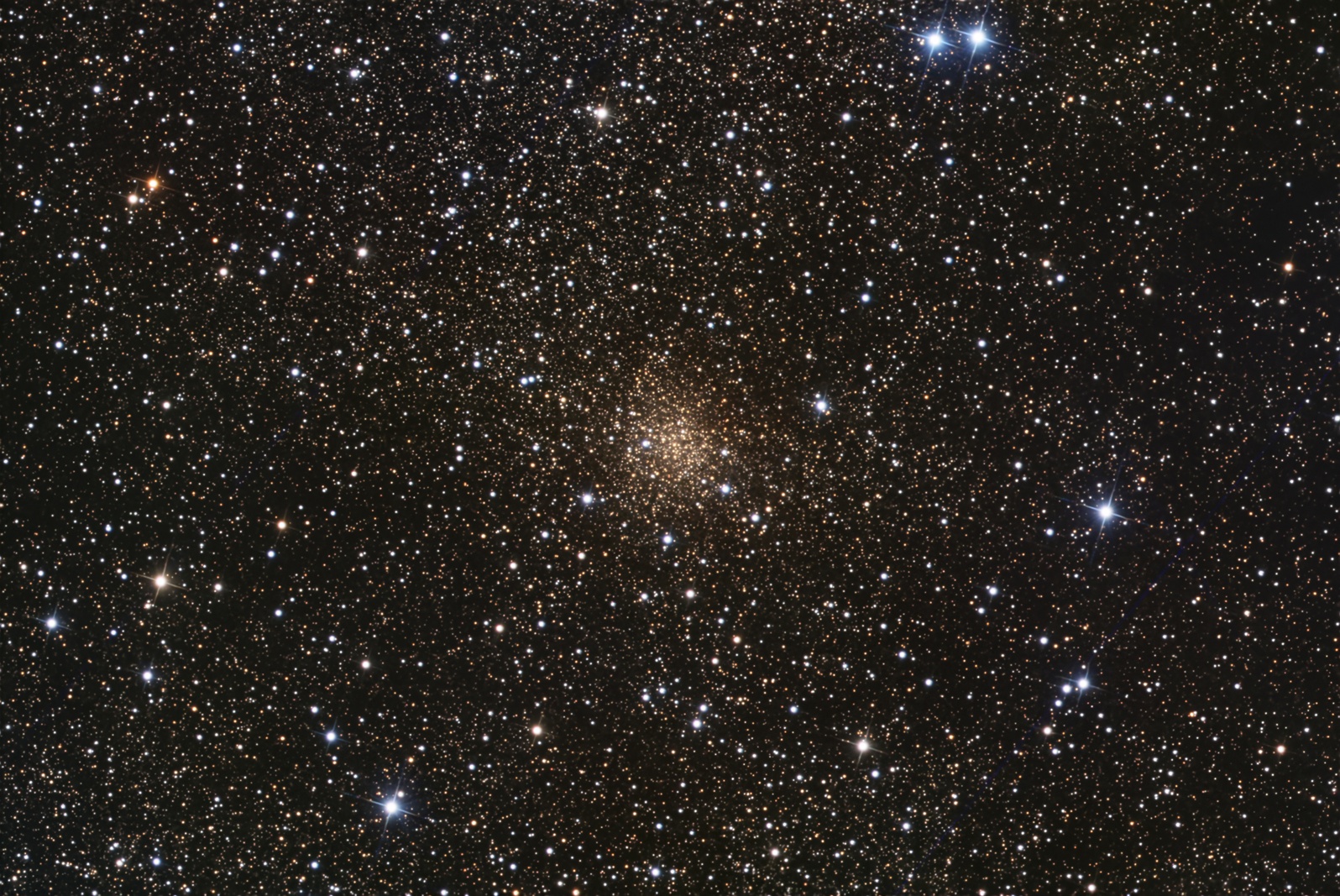
Sunday, Sep 21, 2025
NGC 6749, a Rarely Imaged Globular Cluster in the Galactic Plane
By Aldo Zanetti
NGC 6749 is a globular cluster located in the constellation Aquila. It is considered a difficult object to observe due to its faintness and its location in a crowded, dust-obscured region of the Milky Way. Its scientific importance stems from its unusual characteristics, which have led to differing classifications in the past. Initially mistaken for an open cluster, NGC 6749 is now confirmed to be a globular cluster. It is described as a loose or low-concentration cluster, meaning its stars are not as tightly packed as in many other globular clusters. The cluster is situated within the galactic plane of the Milky Way. This location means its light is significantly dimmed and reddened by interstellar dust, making it appear fainter than it actually is. It is located approximately 25,800 light-years from Earth, though other estimates place it closer to 7,300 light-years away. The varying distance measurements highlight the difficulty of accurately studying objects in this dust-laden region. With an apparent magnitude of around 12.4, NGC 6749 is not visible to the naked eye. It requires a telescope with a significant aperture (at least 8 inches or 200mm) to be observed. Unlike many classic globular clusters, which are metal-poor, NGC 6749 is considered to have an intermediate to high metallicity. One study classified it as a metal-poor halo globular cluster based on its blue horizontal branch, which suggests a lower metallicity than some other clusters. This apparent contradiction underscores the unique nature of the cluster and its challenging environment.
Poseidon-M
Baader LRGB
CGX-L
RC12"
NINA, PIxinsight
